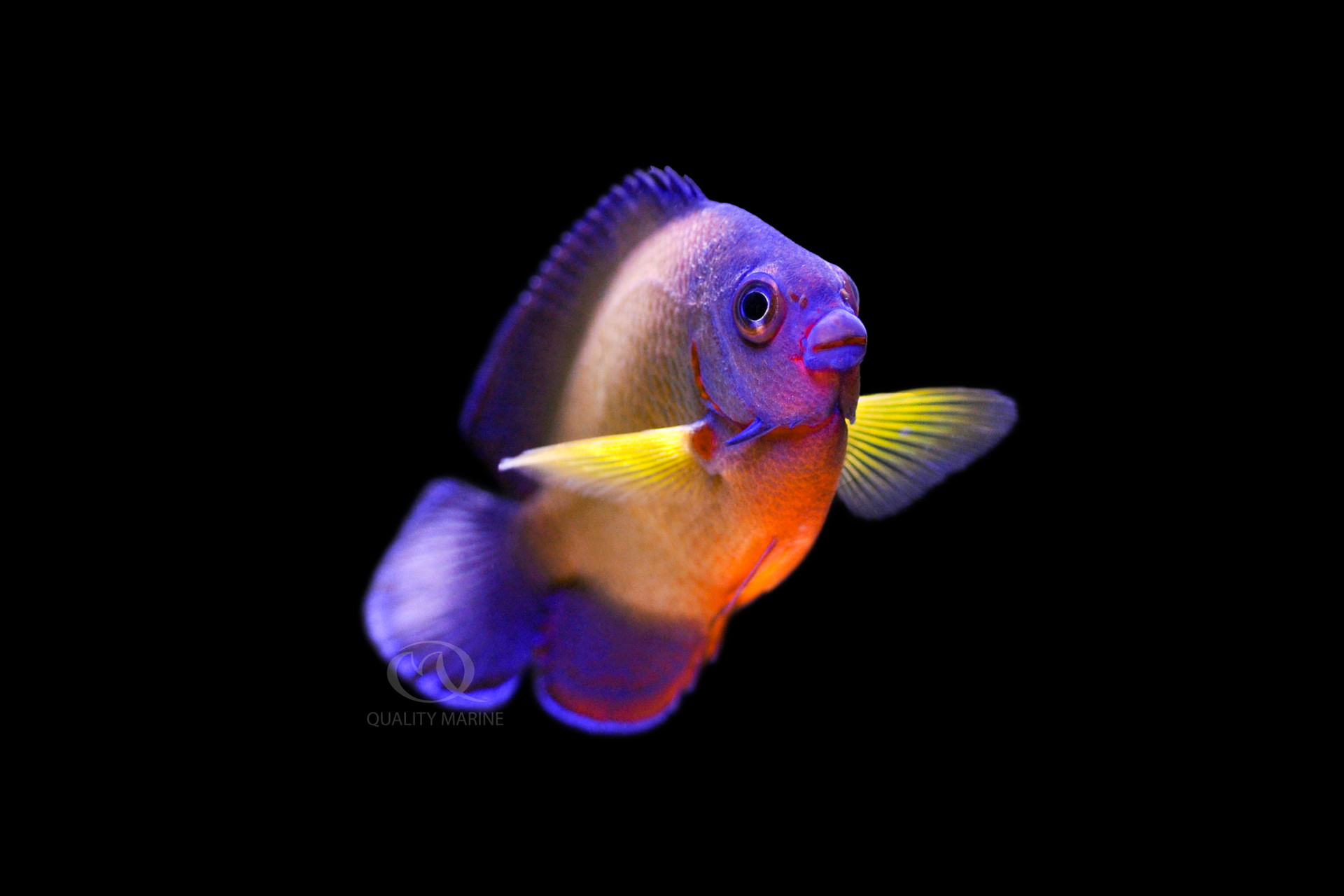Such a Beauty

The Coral Beauty or Two Spined Angel fish (Centropyge bispinosus) is from the family Pomacanthidae better known as Angelfish. Their scientific name “bispinosus” refers to the spines on their gill plates which usually remain unnoticed until one either nets them, grabs them with their hand, or sees one flare in an aquarium! Like most members of the genus Centropyge, they do not get too large, usually staying less than 4 inches long.
The Coral Beauty is widespread throughout the Indian and Pacific Oceans. They are usually associated with dense coral cover living among the branches of small polyp stony corals.Generally found outside the lagoon they rely on current to bring morsels of plankton within reach and grazing on the reef rock and corals structure for food.
A single Coral Beauty could be kept in a 40 gallon aquarium, but that should be considered an absolute minimum. They are active swimmers, and can be quite boisterous, so having a larger territory to patrol (such as a 75 gallon or larger aquarium) will help ensure that they remain a good neighbor with your other aquarium inhabitants. Emulating its wild environment would be best, with plenty of live rock and ideally large branching coral skeletons or similar to live and hide amid. Lots of current from powerheads and wavemakers will also be enjoyed by a coral beauty angel.
Coral beauties are voracious feeders, and you should have no issues getting them to accept quality pellets or frozen foods. They will pick at your live rock, eating algae and other things growing on it, and in some cases this may include some invertebrate and coral picking. These fish have been housed in reef type aquaria, but there is risk involved in keeping them like this. Coral polyps could be on the menu if the mood takes them, while clams will be viewed as a special treat! Keep your angel well fed with multiple small feedings a day, and it will be less likely to target corals as food.
Coral Beauties have been bred by professionals and hobbyists alike, however it is not an easy feet in the home aquarium. The eggs will be released into the current where they will float to the surface. In nature this would allow larval coral beauties to be distributed to far off islands or other reefs without having to swim there, but in aquaria it mostly means that they will be sucked up by filters, or other denizens of your reef tank. If one could collect fertilized eggs, they would need to be transferred to a separate tank, and offered a variety of live phyto and zooplanktons for at least 30-48 days, at which point they would be large and established enough to attempt to ween onto very small frozen foods. For most home hobbyists, this is well outside the range of possibility.
The Coral Beauty is a gorgeous fish that is best appreciated in person; words and images cannot do the ornate details of this fish justice. Pair that with its small size, and undemanding care requirements and it is an extraordinary fish for marine aquariums. Contact your LFS today and ask about getting a sustainably collected Coral Beauty from Quality Marine today!